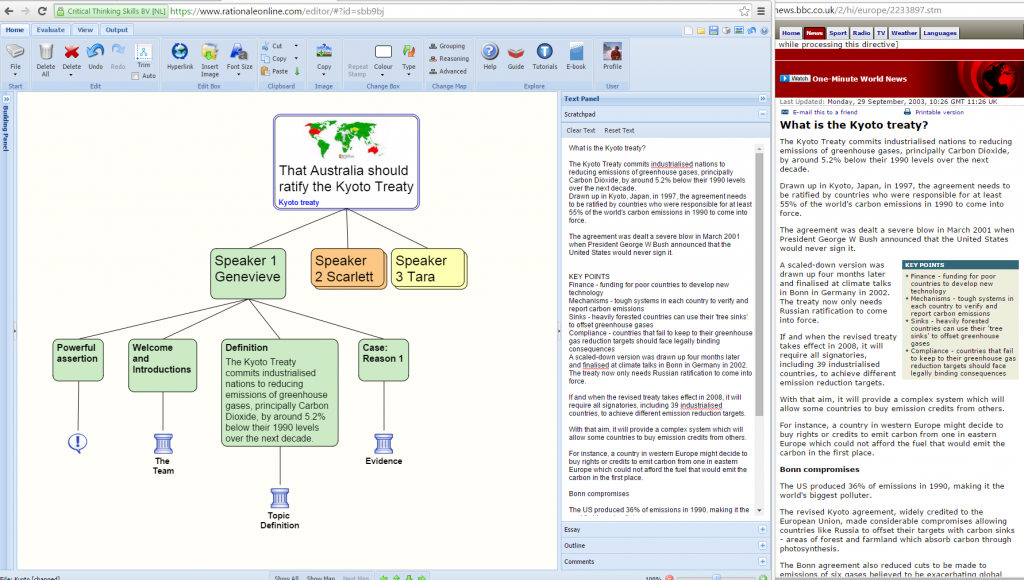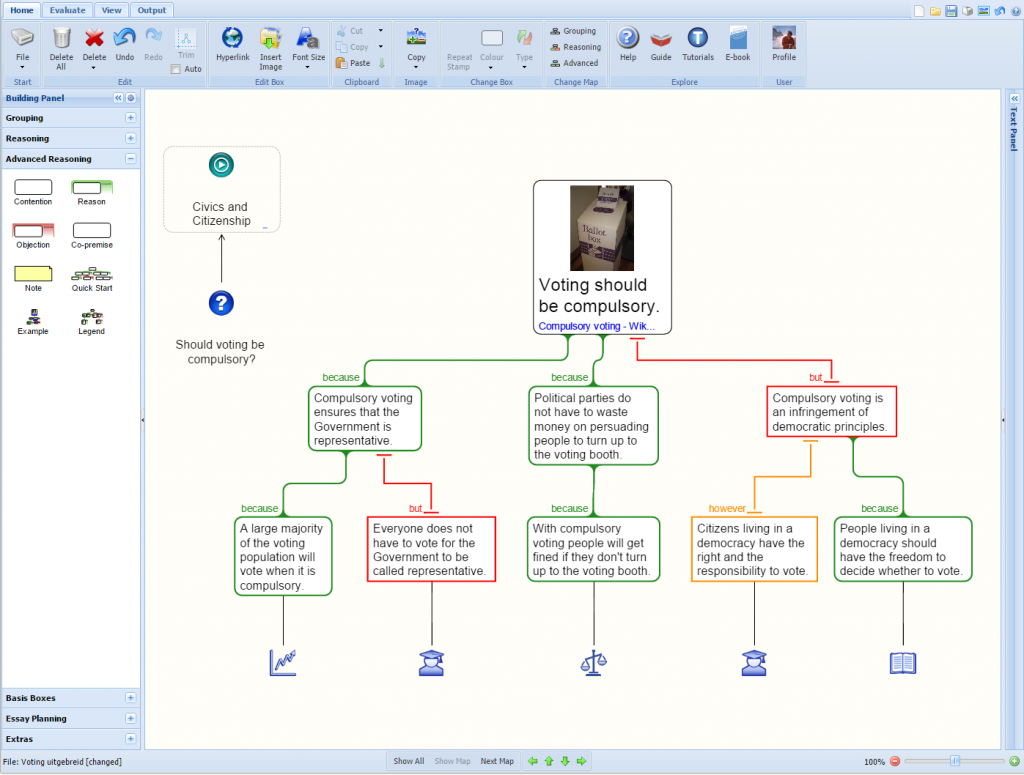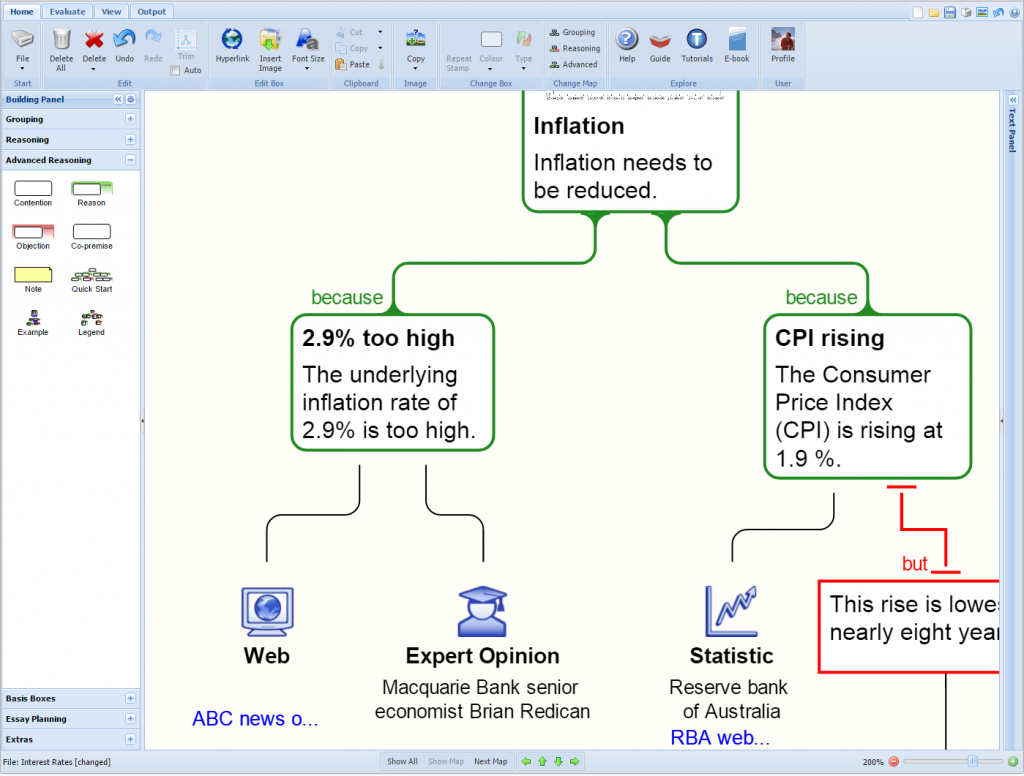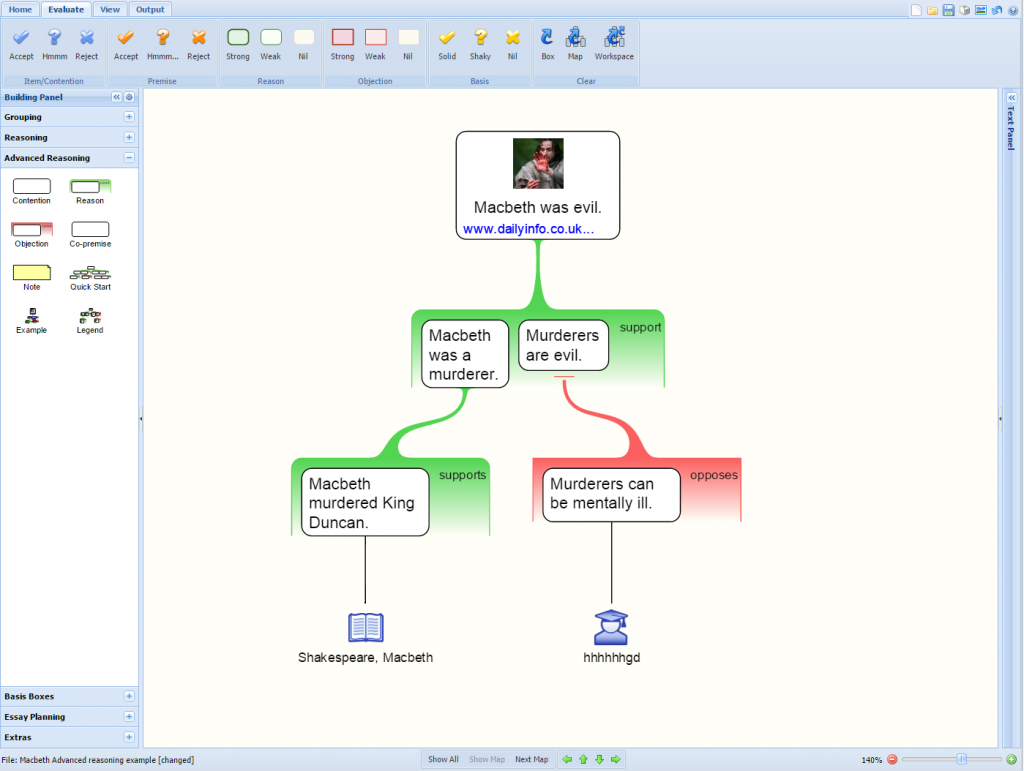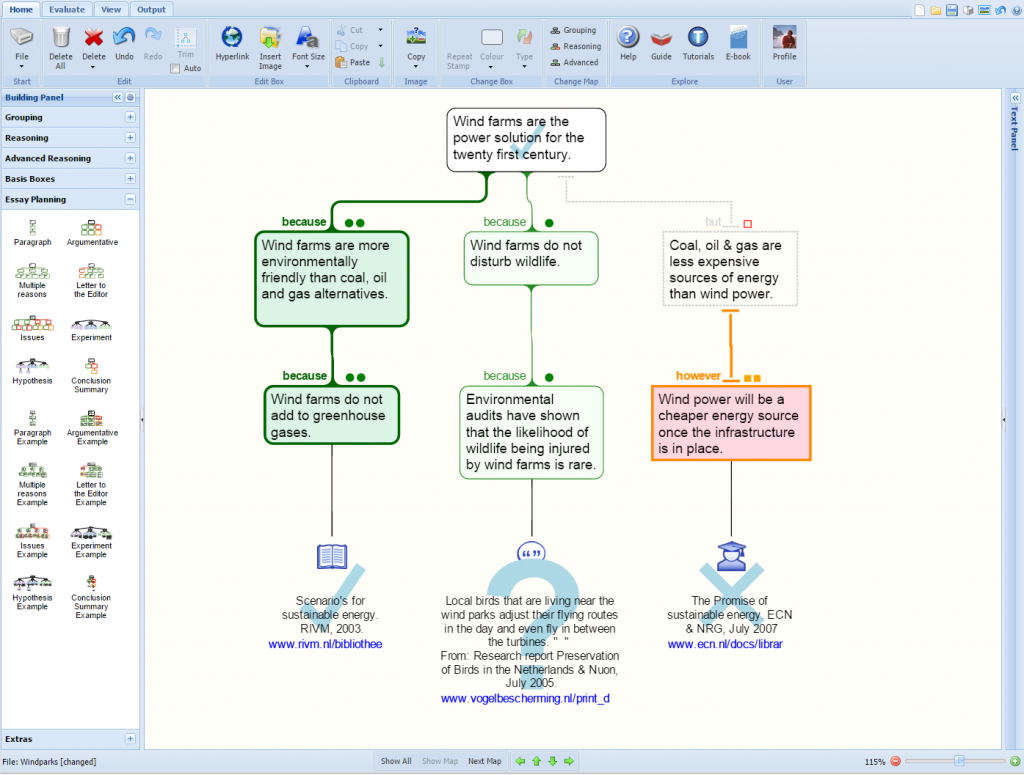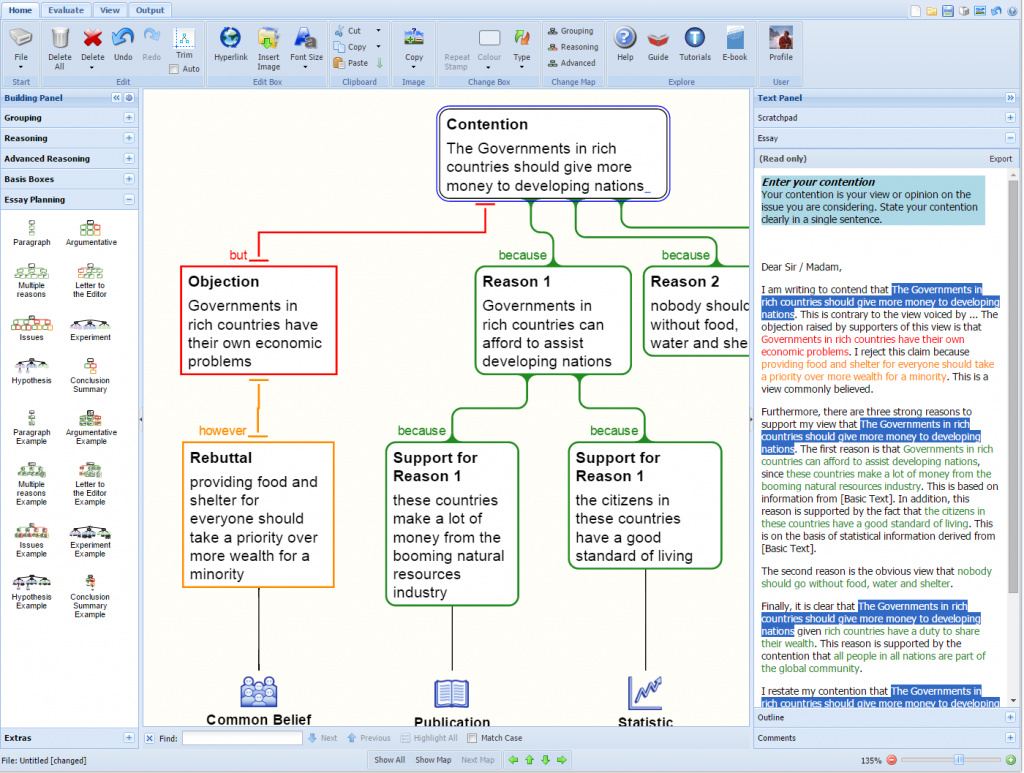6 Steps to better critical thinking
Rationale’s interface has been designed to provide a path for critical thinking. From gathering research, to weighing up evidence to formulating a judgement, Rationale will assist you.
Take a look at these 6 critical thinking steps with examples to demonstrate the path to better outcomes.
Step 1: ORGANISE INFORMATION
We have no difficulty in locating information. The key is that the information is selected and structured appropriately. With Rationale’s grouping maps you can drag information from the web onto your workspace via the scratchpad and include colour, hyperlinks and images. The structured, pyramid like maps provide a guide for students to structure the information in such a way that reveals the connections between the main topic and its various themes or categories.
Step 2: STRUCTURE REASONING
Many people provide opinions but rarely provide supporting reasons for their view. Rationale’s reasoning maps encourage people to support their responses and to consider different opinions. It uses colour conventions to display reasoning – green for reasons, red for objections and orange for rebuttals. It also includes indicator or connecting words so that the relationship between statements is clearly understood.
Step 3: CONSIDER EVIDENCE
A test of a solid argument is how good the evidence is that underpins the claims. Rationale’s basis boxes provide a means to identify the basis upon which a statement is given. The icons provide a visual guide as to the range of research utilised and the strength of the evidence that is provided.
Step 4: IDENTIFY ASSUMPTIONS
We often talk about analysing arguments. This can mean a few things including looking at the logical structure of the argument to ensure it is valid or well formed and also identifying assumptions or co premises. For those who require higher levels of analysis, Rationale provides the analysis map format to show the relationships between main premises and co premises.
Step 5: EVALUATE ARGUMENTS
Once arguments for and against an issue have been logically structured, they need to be evaluated. Rationale provides a visual guide for the evaluation of claims and evidence – the stronger the colour, the stronger the argument while icons designate acceptable or rejected claims. While learning this process of evaluating arguments, the colour and icons provide immediate undertanding and communication of the conclusion.
Step 6: COMMUNICATE CONCLUSION
Presenting ideas orally or in writing is crucial and is often the distinguishing feature between good results and average ones. Rationale has essay and letter writing templates to build skills and confidence. Templates provide instruction and generation of prose. When exported, there is a structured essay plan with detailed instructions to assist understanding of clear and systematic prose.

